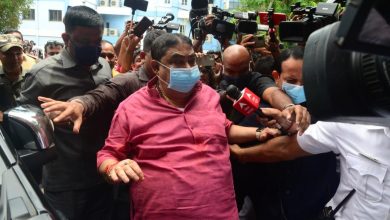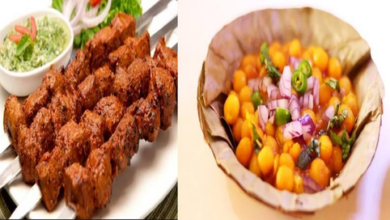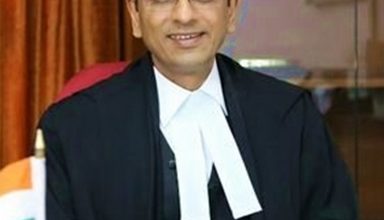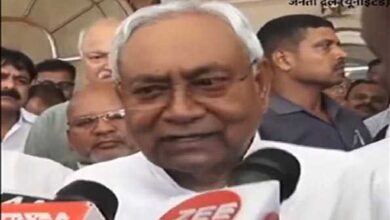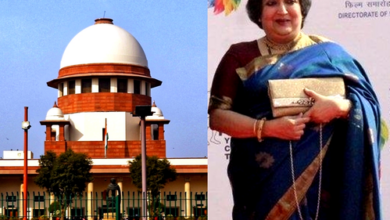Memories Of Another Militancy: The Silence Of Midnight Knocks

New Delhi, June 5: Year: 1988. Place: Gurdaspur. Time: 12 past midnight. A few knocks on the door. And then… nothing. Repeat: Several times a week.
The pattern was reserved for many Hindu families in the city. Nothing was said. Nothing had to be.
As militancy peaked in Punjab, divides that never seemed to have existed even before Partition suddenly started to surface, as the two communities noticed an impenetrable fence between them. This was something that went against the very essence of the overused word ‘Punjabiat’.
Hindus and Sikhs had together borne the brunt of Partition, where after Punjab’s division, life asserted itself once again for them and both communities together embarked on a lost kingdom of peace.
The Bhardwaj family shifted to Gurdaspur from Rawalpindi after Partition. The moment you utter the word ‘home’
to the ancient matriarch of the family, she gets confused — which place is being referred to… Rawalpindi or Gurdaspur?
It is a different story that the family shifted to Karnal three decades back. The young in the family think it’s delirium. Maybe it is that or something beyond medical science.
She may get confused when it comes to other things — her meals, names of some relatives, but her memory never fails her talking about the days in Gurdaspur post-1986 when militancy peaked.
“There was always a certain undefinable tension in the air. Not that the militants spared Sikh families. But when it came to many Hindu families, it was obvious that our presence was not welcome,” Sarojini Bhardwaj recalls.
It was in fact in 1980 that Bhindranwale and his followers started targeting Hindus — murdering Lala Jagat Narain, the publisher of ‘Punjab Kesari’, a vocal critic of Bhindranwale’s ideology.
The movement resulted in the death of more than 20,000 Hindus and Sikhs. In July 1987, Khalistani terrorists killed 34 Hindus on two buses in Haryana and 38 Hindu passengers in Punjab. These targeted killings
precipitated many families to migrate.
From an ideologically-driven movement, it did not take long for it to metamorphose into an extortion racket, robbery and indiscriminate killings of innocents from all faiths.
But for Sarojini, the curve or dimensions of the movement are of no interest. Her losses have been at a deeply personal level.
“Those from the mohalla who would visit often would just say a polite hello if you bumped into them. Hindus had stopped going to shops owned by Sikhs and vice-versa. Every moment reminded me of Partition. A land gets divided later, it is always small connections breaking that prelude.
“I don’t know how to put it, but big happenings don’t break you, they are so massive that the shock saves one. It is the smaller ones that hurt consistently. When we had made up our mind to leave, many neighbours did come home. They asked us not to go, but also questioned — ‘how much are you willing to sell the house for?’ By the way, I always asked my son to wear a pagdi when he went out on his scooter,” Sarojini says.
Her son, Akshay Bhardwaj, has been listening for a long time. He does not want to be part of the conversation, as he feels that talking about the past only brings it alive and nudges those corners inside that are best left dormant.
He just adds, “I have visited Gurdaspur a few times for work and to meet some relatives. For me, it is not painful to go there. All I feel is anger, directed at no one in particular.”
Talk to them about the fact that the word ‘Khalistan’ is again being used frequently in the media, the recent clashes between Hindu and Sikh religious outfits in Patiala, and gang wars becoming the order of the day in a state that has witnessed much bloodshed in the ’80s and ’90s, and she says, “Perhaps this generation is condemned not to learn from the experiences of the last one.”
The year 1984 will forever be remembered by the Sikh community — Operation Blue Star and the aftermath of Indira Gandhi’s assassination.
Paramveer Singh and his family, who were wholesale dealers of paper items, had no choice but to move from Delhi to Rajpura in Punjab.
“No one from our family was hurt, but what happened to those from our community made us feel extremely vulnerable,” he says.
Stressing that while they did feel a sense of security after moving to the small town of Rajpura, it did not last very long.
“Yes, militancy and many other factors did divide Hindus and Sikhs in Punjab, but it is not that the latter were not affected. A movement supposed to ‘liberate’ Sikhs destroyed many of our families. The Talibani diktats
issued, the social and law and order problems that came with the free flow of weapons, and the massive hit on businesses. Those were bleak times, and there seemed to be no way out,” Paramveer Singh adds.
The moment you talk about gang wars, the huge number of licensed guns in Punjab and contemporary singers glorifying violence, his grand-son, Sarabjeet Singh, is suddenly interested.
For him, Sidhu Moosewala spoke the language of the young, like many other contemporary singers. For him,
new-age Punjabi singers voice the angst of the young. The father just looks at him…


